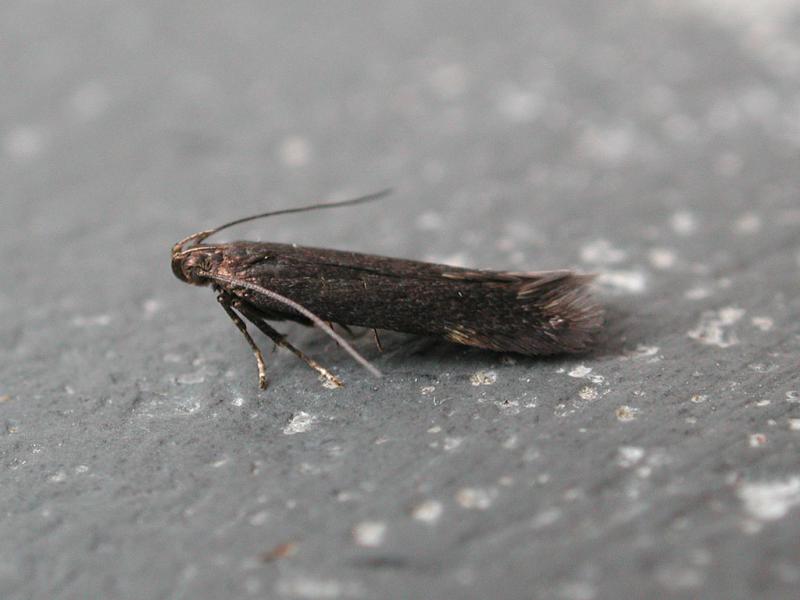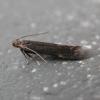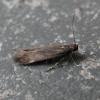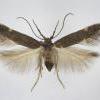35.082 Oxypteryx immaculatella (Douglas, 1850)
Status and Distribution
The genus Eulamprotes is now considered a junior synonym of Oxypteryx.
Very local, with an extremely patchy and disjointed distribution in south-east and south-west England, western Ireland and a few coastal sites in Wales. Recorded more evenly in the northern half of mainland Scotland although still uncommon; outside this area noted in Fife in 1999, Dumfrieshire in 2004 and South Uist on the Outer Hebrides in 2011. Not recorded from Isle of Man or the Channel Islands.

Provisional map
Foodplant and Larval Feeding Signs
Foodplant not known. R. J. Heckford and J. R. Langmaid (1988) suggested it may be Hypericum pulchrum (slender st. john's-wort) but this plant is absent from some of the subsequent sites where the moth has been found. It occurs in Denmark, Portugal and Majorca.
Habitat
Found in a wide range of habitats including dry coastal cliffs, damp low-lying fields, limestone pavement, maritime heath, herb rich grassland in several parts of Scotland and locations with sandstone or slate as the underlying rocks.
Finding the Moth
Larva: unknown, possibly associated with Hypericum sp.
Adult: flies in sunshine around midday, in the early evening and later comes to light. Has been swept during the day and disturbed from dead gorse. A single specimen has been observed apparently nectaring on Antennaria dioica (mountain everlasting).
Similar Species
Best confirmed by dissection. Aproaerema anthyllidella is similar as are other small dark gelechiids with some form of pale markings on the costa as detailed below.
A few similarly-sized Gelechiid species have this combination of dark forewing and whitish yellow tornal and costal spots. The colouration of the labial palps are one of the more useful features to aid determination.
nb - labial palp (lp) segment one is very short (difficult to see) and tucked back below the eye, segment two is broader and extends forward to a position in front of the base of the face, segment three is thin and needle like curving up in front of the face.
Oxypteryx atrella - lp segments 1, 2 and 3 obviously ochreous with the lower edge in segment 3 narrowly fuscous (blackish brown). Forewing has apical quarter with a purple sheen.
Oxypteryx immaculatella - lp segment 1 dark fuscous and segment 2 greyish white above and on sides, dark fuscous below. Slightly smaller species with diffuse or absent (when worn) paler forewing markings.
Aproaerema anthyllidella - lp segment 1 purplish-fuscous, segment 2 variable in extent of buffish-white and purplish-fuscous and segment 3 buffish-white with outer edge purplish fuscous. The forewing often has yellowish ochreous scales in the fold (lower central part of the forewing at one-third). This species has a dark cilia line obvious in fresh specimens, absent in Eulamprotes spp.
Aproaerema sangiella - lp segment 1 purplish-fuscous, segment 2 inner surface buffish white, outer surface has a variable mix of darker and lighter scales and segment 3 inner surface buffish white, outer surface purplish fuscous. Generally a larger moth.
Aproaerema albipalpella (rare) - lp segment 2 has white ring at apex. A small species.
Found in every month from May to early October but it is unknown if this is as a single extended, or double, brood. Fresh looking specimens have been reported in August.
Earliest: 8th May 2008 (VC48)
Latest: 3rd October 2011 (VC36)




